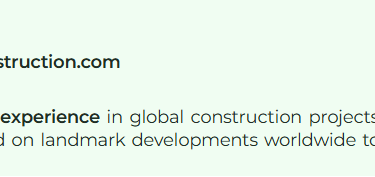Navigating Design Challenges and Solutions in Museum Construction
8/23/20252 min read


Introduction
Museum construction is a complex undertaking that intertwines architecture, art, and functionality. These venues serve not only as repositories of cultural heritage but also as social and educational spaces. As a result, the design of museums poses unique challenges that require innovative solutions. In this blog post, we will explore some of the primary design challenges faced during museum construction and the strategies that professionals can employ to overcome them.
Challenge 1: Balancing Aesthetic Appeal with Functionality
One of the foremost challenges in museum design is achieving a balance between aesthetic appeal and functional requirements. Museums must be visually captivating to attract visitors while also serving practical purposes like accessibility, safety, and protection of artifacts from the elements. An effective solution to this issue is the integration of flexible spaces that can adapt to various exhibitions while maintaining a cohesive aesthetic vision. Architects often employ modular designs and movable walls to create environments that can be tailored to specific exhibits.
Challenge 2: Meeting Environmental and Security Standards
Museums house irreplaceable artifacts, making them targets for theft or damage. Additionally, they must provide a climate-controlled environment to preserve the integrity of the collections. Addressing these security and environmental concerns involves adopting advanced technology and design features. One solution is the installation of sophisticated security systems that incorporate surveillance, alarms, and controlled access. Moreover, architects can optimize energy efficiency and environmental sustainability through the use of green roofs, solar panels, and natural ventilation systems, which not only protect the collections but also reduce operational costs.
Challenge 3: Creating Engaging Visitor Experiences
Ensuring that visitors have an enriching experience is another critical challenge in museum construction. Museums must go beyond mere display to create engaging narratives that resonate with diverse audiences. This can be achieved through the use of interactive technology, such as virtual reality displays and interactive kiosks. Furthermore, thoughtful spatial design enables the creation of immersive environments where visitors can navigate seamlessly through exhibits. Collaboration with curators, educators, and technology experts can lead to successful outcomes that enhance learning and foster appreciation for the arts and sciences.
Conclusion
In conclusion, the challenges of museum construction are multifaceted, requiring a careful balance of aesthetic, functional, security, and experiential considerations. By embracing innovation and collaboration, designers and architects can develop solutions that enhance the visitor experience while safeguarding the integrity of collections. As museums continue to evolve, addressing these design challenges will be crucial in ensuring they remain vital cultural institutions that educate and inspire future generations.


